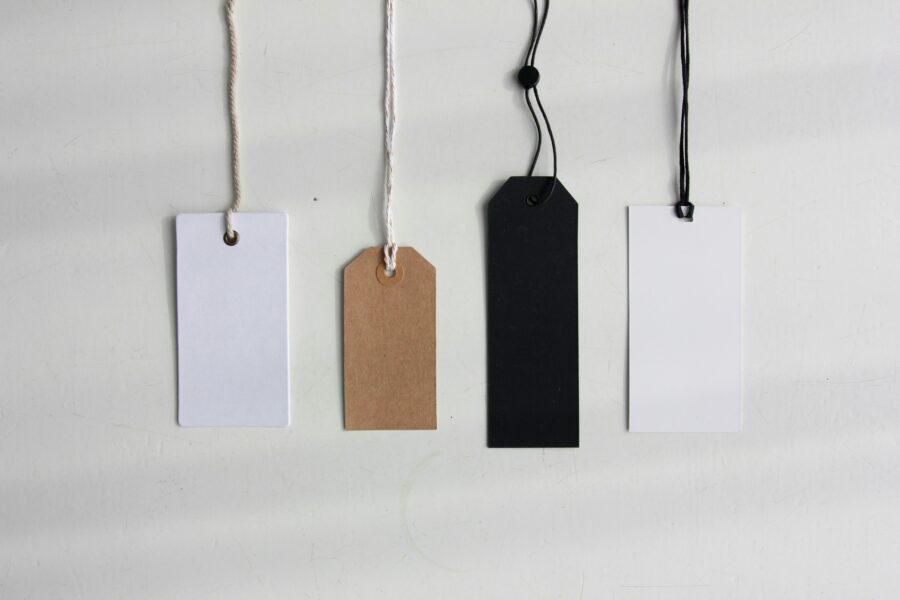Are you a greenwashing victim?
You might be surprised to hear it, but the answer is likely, yes. According to UK study 59% of the sustainability claims made by leading fashion brands in 2021 used greenwashing .
Greenwashing, a not-so-new neologism, is when companies make false claims that their products are more sustainable to achieve a “green halo” pr effect.
Even for savvy consumers, spotting these deceptive sustainability claims can be challenging. Here, we’ll teach you how to identify common fashion greenwashing tactics and guide you toward more authentic communications, so you can make purchases that actually align with your intentions.
What is Greenwashing?
Environmentalist Jay Westerveld coined the term “greenwashing” in the 1980s when he criticized a hotel’s “environmental” policy on reusing towels. The policy, aimed at reducing laundry costs, was marketed as eco-friendly, but the hotel made no real efforts to be more sustainable beyond financial gains.
While we now use the term for more than just towels, the hotel was unfortunately onto something – on average, over one third of customers globally are willing to pay higher prices for a product if they believe it’s made more sustainably. It’s no surprise, that more vague or widely-defined buzzwords like sustainable or eco-friendly have become almost ubiquitous on products, sometimes with little to no evidence to support them.
And when it comes to fashion, the greenwashing can even be trickier to spot because of global scope and complicated nature of production. By using materials that sound more environmentally friendly without sharing the whole impact or highlighting small improvements like eco-friendly materials while ignoring overproduction or exploitation, fashion brands continue to lead customers astray without addressing systemic issues.
7 Fashion Greenwashing Tricks to Avoid
Here are seven common tactics brands use in 2024 to create the illusion of sustainability while remaining unchanged.
“Made With Recycled Materials”
Ah, one of the prime offenders. “Recycled” is a buzzword in fashion, but its use is often misleading and misunderstood. Less than 1% of clothing is recycled into new garments. That’s right, read that again. And in general most recycling is a scam.
Instead, most “recycled” clothing is made from synthetic fabrics like polyester or nylon, derived from post-consumer waste, such as plastic bottles. While this reduces some plastic waste, it doesn’t address the massive amount of clothing produced and discarded. (Nearly 60% of new clothing is thrown away or incinerated within a single year.) Companies may use a small amount of recycled synthetics alongside virgin materials, allowing them to claim “made with recycled materials” while still contributing to large-scale oil consumption. Synthetic fabrics, recycled or not, also shed microfibers during washing, which pollute waterways and harm marine life and human health.
Take for example, Mango, a fast fashion brand that has claimed to “…set ourselves the goal that 100% of the fibres we use will be more sustainable by 2030.” While their goal includes using 100% recycled polyester by 2025, they have no goals to actually reduce their use of polyester, no ways to address microplastics, and have not committed to producing less, which is a root cause of the plastics issue.
If you’re going this route, look for brands that us higher than 80% recycled content. If the label doesn’t have percentages, that’s a big red flag.
Carbon Offsetting / Carbon Neutral
Carbon offsetting is when companies fund environmental projects to balance their carbon emissions. Fashion brands claim this helps them reduce emissions and achieve net-zero status, appearing eco-friendly. However, fast fashion companies, like so many businesses (think airlines), often use carbon offsetting or “credits” as greenwashing. They focus on selective initiatives or distant targets, masking their high outputs and rapid product turnover that drive significant emissions. This method of treating sustainability like accounting and “balancing the books” obfuscates a brand’s actual environmental impact and misleads consumers into thinking they are sustainable.
Uniqlo is an example of a brand that has made claims to reduce its footprint but doesn’t offer transparent reporting about its goals. A prime example of this is when the company highlights reducing its energy use by switching to LED lightbulbs in their stores, instead of prioritizing improving their manufacturing footprint or other significant contributors. (Talk about small peas. Our boomer dads switched to LEDs 15 years ago. Do more!)
Vegan Leathers
When it comes to leathers, vegan is often a word that fashion companies use to make plastic or synthetic sound more palatable. While real leather has its problems too, vegan leather is unfortunately not a perfect solution. Synthetic leathers, typically made from PVC or PU plastics, are derived from fossil fuels. While PU has fewer chemicals like phthalates than PVC, both remain non-biodegradable and fossil fuel-dependent.
Shoe brand Alohas has grown in popularity due to their focus on creating sustainable footwear. Unfortunately, many of their actions don’t live up to their claims. Their vegan line, promoted as eco-friendly, is primarily made of virgin polyurethane (PU) and polyester.
What we need more of here is less bickering among vegan activists who push for plastics and “sustainability folks” who cling to outdated notions that leather is biodegradable and therefore, better. the trust is neither are sustainable options as they stand and this infighting halts real collaboration around nature or sustainable chemistry-based solutions.
Eco-friendly Packaging
Many brands will turn to packaging to make their practices seem more sustainable. But using recycled packaging or “eco-friendly materials” is only a marginal improvement if the brand continues to overproduce.
Urban Outfitters claims to use recycled packaging, but a closer look reveals that only 50% of its packaging is made from recycled materials. For a fast fashion brand that overproduces, doesn’t address use of harsh chemicals, and offers little transparency into its labor practices, a claim of 50% recycled materials in packaging seems not worth celebrating.
Resell or Take-Back Programs
Take-back programs, where consumers drop off used products in exchange for a coupon or discount, are often touted as environmentally friendly. In theory, they allow brands to recycle or properly dispose of garments. However, if they include discounts on new products or other incentives to shop more, these programs can encourage overconsumption by making consumers feel good about buying new products. Furthermore, the garments themselves aren’t always fully recycled. (Kasi explored this in-depth in Sourcing Journal.)
Lululemon’s “Like New” program claims to resell used clothing but only accepts items in excellent condition, leading many customers to simply purchase more while believing they are making a positive impact.
Paying Minimum Wages
Companies often greenwash their labor practices by claiming they pay the minimum wage, creating an impression of fair treatment. However, minimum wages and living wages are vastly different. The latter keeps up with inflation, varies by country, and covers basic needs such as food, housing, and healthcare; while the former is merely what’s legally required and often based on outdated or arbitrary cost of living calculations and can be influenced by pressure from retailers and brands. Today, less than 2% of garment workers are estimated to earn a true living wage today.
Gap states on its website it is “paying people fully for their work,” but there is no clear evidence that workers receive living wages that ensure a decent standard of living.
Selective Disclosure
Selective disclosure is a greenwashing tactic where companies highlight certain sustainable practices while hiding ongoing harmful behaviors. Examples include not disclosing information on manufacturing practices, water or carbon reduction efforts, or human rights violations. They might highlight use of more eco-friendly materials, but continue to overproduce clothing, one of the main issues of fast fashion.
Cider promotes its “smart fashion model” that claims to produce “on demand” to reduce waste and carbon footprint. However, there’s no evidence supporting that Cider genuinely minimizes waste or reduces environmental impact. They still follow a fast-fashion approach with rapidly changing styles and extensive use of virgin synthetic fabrics. With minimal transparency in its supply chain, there’s also no proof that Cider ensures fair wages or safe working conditions for its workers. Or, worse yet, even knows its workers.

The Good: How to Go Greenwash-Free and Spot Brands Doing it Right
Overall, look for companies that take a holistic approach to ethical and sustainable business practices. BIG RED FLAG ALERT: If a company is pushing one term without addressing other issues, they’re likely greenwashing. As opposed to the tactics above, here are things you can do or look for from brands that are legit:
1. Opt for Upcycled Fabrics
Instead of recycled synthetics, opt for upcycled fabrics, which repurpose old clothes into new garments. E.L.V. Denim is a brand that uses 100% upcycled materials, preventing them from ending up in landfills. Thrift tip: Sometimes synthetics are unavoidable. We like to look for at least a 50/50 blend with a natural fabric like cotton or linen to reduce the toxicity and increase the breathability.
2. Support Brands Reducing their Own Carbon Footprint
Instead of supporting brands that rely on carbon offsets, choose those actively reducing their own carbon footprint. For example, MATE the Label manufactures locally and offers full transparency into its carbon footprint, along with its efforts to reduce it.
3. Seek out Plant-Based Vegan Leathers
While most vegan boots and products today are made from PU or PVC (essentially plastic), innovative alternatives are emerging. For example, Nae Vegan Shoes uses materials like Pinatex (made from pineapple leaves), corn, apple skin, in addition to some recycled PET.
4. Eco-friendly Packaging
Look for truly compostable packaging with clear instructions and the Forest Stewardship Council label. Whimsy and Row, an LA-based clothing brand, uses reusable containers for packaging when possible, in addition to certified recycled packaging. Basics brand, OGL, also ships its clothes in biodegradable packaging that dissolves in water. We think this is neat. But it’s unclear if the packaging is plant-based or runs the risk of contaminating waterways. Dissolvable and specialized compostable packaging is great, but it also also puts the onus on the consumer to “do the work.” Just something to be aware of and willing to do if you order.
5. Partake in Apparel Repair Programs
Extending the life of your products is one of the most environmentally friendly actions you can take. Brands that encourage repairs and product longevity—rather than just offering take-back programs for disposal—deserve your support. For example, sneaker brand Veja has opened cobbler shops in cities like Berlin, London, and New York to repair sneakers, promoting sustainability through longevity. Patagonia’s Worn Wear program is also a longstanding example of a legitimately run repair and resale program.
6. Look for Living Wages
Ensure brands pay living wages, not just the minimum. It’s crucial that brands are transparent about their practices to not divert the blame onto the factory for the low pay. Tools like Good on You allow you to look up a brand and see how fairly they pay their laborers.
Etiko and Cotopaxi are brands that prioritizes paying workers fair wages and use Fair Trade labor to produce their clothing and shoes.
Advocating for a Greenwash-Free Future
While learning to identify greenwashing is an important step in the right direction, the solution isn’t just in consumers avoiding these fast fashion ploys, but in stopping them from happening all together. Legal actions, bills, and movements aimed at stopping greenwashing will be crucial in putting an end to fashion greenwashing.
On January 17, 2024, new legislation was approved in the EU in an attempt to “…tackle unfair commercial practices that mislead consumers and prevent them from making sustainable consumption choices, such as practices associated with the early obsolescence of goods and misleading environmental claims (‘greenwashing’).”
Action is being taken against individual brands as well. For example, in July, Lululemon had a new class-action lawsuit that accused their sustainable marketing campaign, “Be Planet,” of misleading consumers through greenwashing. The athleisure brand has made claims of “avoiding environmental harm,” all while doubling its greenhouse gas emissions between 2020-2022 and using a high amount of synthetic fabrics. Actions like this hold brands accountable and push them to change. We can each take strides to follow bills and support legislation, like the Fashion Act, which didn’t quite make it to the floor for a vote but still has a chance, to begin cleaning up the fashion industry.
Although the solutions to fashion greenwashing aren’t simple, we can make a difference by questioning common but misleading tactics, choosing better alternatives like upcycled clothing or repairing what we already have, and supporting legislation that holds the industry accountable to change. Together, these choices can lead us to a more honest and sustainable world of style.
Author Bio:
Jackie Warehime is a New York-based designer and sustainability advocate with a background in product design. She writes about sustainable design at www.jackiewarehime.com to explore and expand the ethical and sustainable approaches to crafting our world.
Images: Unsplash



